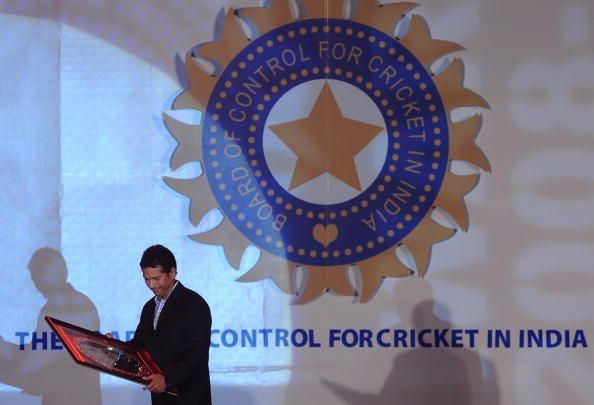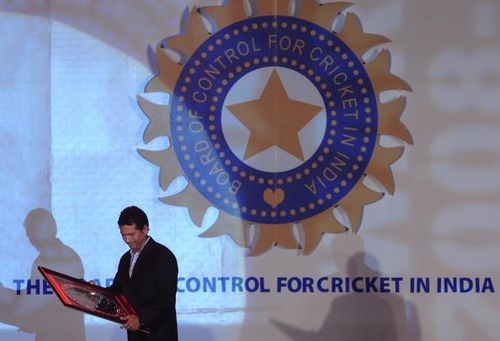
Why the BCCI understands us best

Yes, you read the headline right. I actually believe that the decision to have a curtailed South Africa tour is one of the brightest ideas the BCCI has ever had.
No, I am not related to N Srinivasan in any way. In fact, I am not even a Sachin Tendulkar fan. I don’t know if this brutally frank acknowledgement of mine would hinder the readership rates of this article but I would still carry on.
To understand this point more clearly, it is necessary to go back quite some time in history. When Lala Amarnath hit India’s first Test match century, the women present in the stadium rushed out and showered the young batsman with their jewellery. This spectacular event though had a much larger socio-political significance – it was almost akin to a “middle finger in your face” to the oppressors who had dominated us for two centuries.
It was understandable then that cricket took a backseat for the next three decades as a new India built its systems of governance to run the country. There were the occasional blips on the radar – the series victories in New Zealand, England and West Indies in the 60s and 70s – but despite the occasions being momentous, the celebrations were far from historic. This was an age before social media – the keenest of the keen stayed up nights to listen to the matches on radio while the others read about the results in the papers the next day by when the sweet taste of victory had been diluted by the thoughts of a long day at work.
So when India turned up for the World Cup in England in 1983, nobody had any expectations. The last two World Cups had produced a cumulative total of one victory – against a minnow East Africa. The second of these campaigns had also included a humiliating defeat at the hands of Sri Lanka who were still some way off from becoming a Test playing nation. The only good thing about this World Cup was that satellite television had now become popular across the country and we could actually watch India losing instead of just having to hear about it.
There was a minor change in the script – India actually started to win. From no-hopers, Kapil’s Devils had wound their way up to the World Cup final and ended up on top of the West Indian Goliath’s head. The World Cup victory 28 years later would count as one amongst many of new India’s successes, but the 1983 win was the biggest international success for India in any walk of life at that point of time.
The eastern parts of the country, which so far had been more prone to football, had suddenly been converted. Corporate interest in the sport too had received a major boost and, as soon as four years later, Dhirubhai Ambani’s Reliance would become the second entity to sponsor the World Cup after Prudential.
But barring the World Cup and the World Championship of ’85, successes were few and far between for the Indian team. There was the occasional high like the 2-0 series victory in England, but it was too occasional to leave a strong after-taste. However, a major paradigm shift was on its way.
Till the ’83 World Cup, cricket was a prominent source of interest in England, Australia, New Zealand and West Indies. All of these countries were dominant in at least one other sport – for England and West Indies it was football, for Australia and New Zealand it was rugby – which meant that cricket’s share of eyeballs was divided.
In contrast, the newly born subcontinent had barely any sporting preferences to speak of. A major success in one sport therefore created a chain reaction which led to the proliferation of the game of cricket in this part of the world.
Things moved fast – Sharjah was seen as an ideal venue to cash in on the large Indian and Pakistani expatriate population which led to its getting a chance to host the first Asia Cup. Around the same time Sri Lanka got Test match status, making the game much more relevant in a war-torn country seeking for some succour.
By the 90s, the seat of power had started to shift. It was India who facilitated many of the happenings of this period – from South Africa’s re-entry to Bangladesh’s Test match status. The other countries too had begun to accept India’s rise to superpower status in the cricketing world – a trip to and fro by the Indian team would not just mean a higher number of gate receipts but also millions of dollars of revenue through television advertisements.
And then there was Sachin Tendulkar. At the height of his powers, Tendulkar was like Alexander – conquering every land he set his foot on. Even as India struggled and fumbled with a weak team, Brand Tendulkar chugged on. Wherever he went, people would turn up in hordes to watch him play – often to watch only him play.
But this was the 90s and we were still getting used to success. Liberalization had just happened, double digit growth was still some years away and we were happy with our middle class aspirations. Until Y2K burst upon us.
It seemed as if a new India had entered a new millennium. A burgeoning population which had up to that point threatened to be our demise now seemed to be our ticket to bigger things. With its varied demographics and the second largest population in the world, India provided a market too irresistible for multi-national companies. They came in hordes to set up shop and, as a result, the Indian economy surged upwards.
Our bourgeois background suddenly deserted us; we now had access to everything which our fellow human beings in other civilized societies had. This “we want the best” attitude spilled over to our love of cricket – suddenly we were no longer happy with the odd victory over Pakistan; we wanted to be number one.